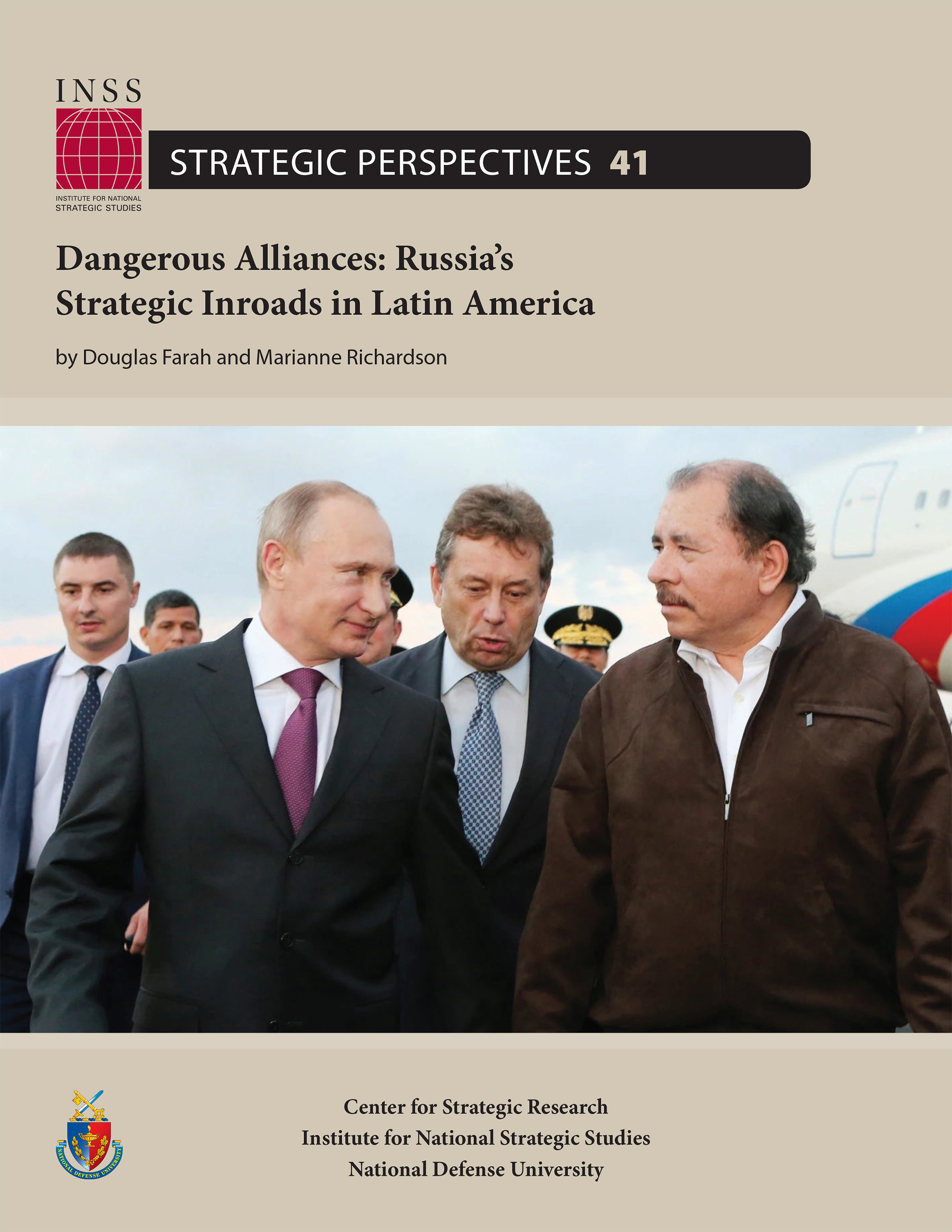Download PDF
Executive Summary

Russia’s strategic interests in Latin America center on establishing a multisector, persistent presence in the Western Hemisphere as a counterweight to U.S. and North Atlantic Treaty Organization (NATO) presence in the former Soviet Union and bordering states. The engagement focuses on aggressive implementation of what the West calls the doctrine of “hybrid warfare.” This approach fuses hard and soft power across multiple domains, recognizing the existence of a permanent state of confrontation with the West. This strategy undergirds the rationalization and operationalization of Russia’s invasion of Ukraine.
Russia’s primary areas of visible engagement include escalating mis- and disinformation through its own state media in coordination with the state media of authoritarian, anti-U.S. allies in the region. These tactics create echo chambers of false narratives. Russia also provides weapons sales and support to authoritarian populist regimes, which give Moscow a toehold in the hemisphere and a veneer of international legitimacy.
Less visible but vital lines of effort include the operation of networks of groups and people with deep ties to Russian intelligence and the former Soviet KGB (Komitet Gosudarstvennoy Bezopasnosti) specializing in cryptology and cyber activity and active across Latin America. This hub makes available multiple advanced Russian state surveillance systems, which are now used by authoritarian regimes in Nicaragua and Venezuela, offered in Paraguay and Bolivia, and likely acquired by nonstate armed groups across the continent. This Russian technology is responsible for increasing the repressive capacity of the most authoritarian, most anti-U.S., and least transparent regimes.
In addition to the sale of equipment, the network provides selected partners with access to high-level Russian officials, support to regional multilateral organizations formed to exclude the United States and Canada, and technical assistance for developing cryptocurrencies in the region. An overlapping, deeply rooted, and low-profile network of veteran state and quasi-state actors across the region, often involved in illicit activities, complements the technology network.
A key hub of Russian activity is in Nicaragua, under the protection of the Daniel Ortega/ Rosario Murillo regime. In addition to allowing a permanent presence of some 250 Russian military personnel on the ground, Nicaragua is the Russian base for its GLONASS (Global’naya Navigatsionnaya Sputnikovaya Sistema) navigation system. Nicaragua also houses a multimillion- dollar vaccination plant that produces no vaccines, a police academy that does little of what it advertises, a cyber warfare and training center in the state telecommunications building, and a Russian Ministry of Interior building that enjoys the diplomatic status of an embassy.
Russia’s economic interests in Latin America, particularly compared with those of the United States and the People’s Republic of China, are small. However, in specific countries such as Argentina and Paraguay, Russian economic interests are significant and give Moscow leverage to pursue other strategic objectives.
Russia’s growing strategic presence in the U.S. near abroad empowers anti-U.S. populist authoritarian regimes while gaining potentially important access points for Russia in the Western Hemisphere. Understanding and developing a comprehensive response to this asymmetric threat should be a hemispheric priority as the United States faces numerous strategic challenges with waning influence in the region. The response should include ongoing proactive engagement in the media and on social platforms to create a fact-based counternarrative to Russian propaganda as well as coordination with regional allies to expose and counter Russian activities and the threats they pose.
Read More